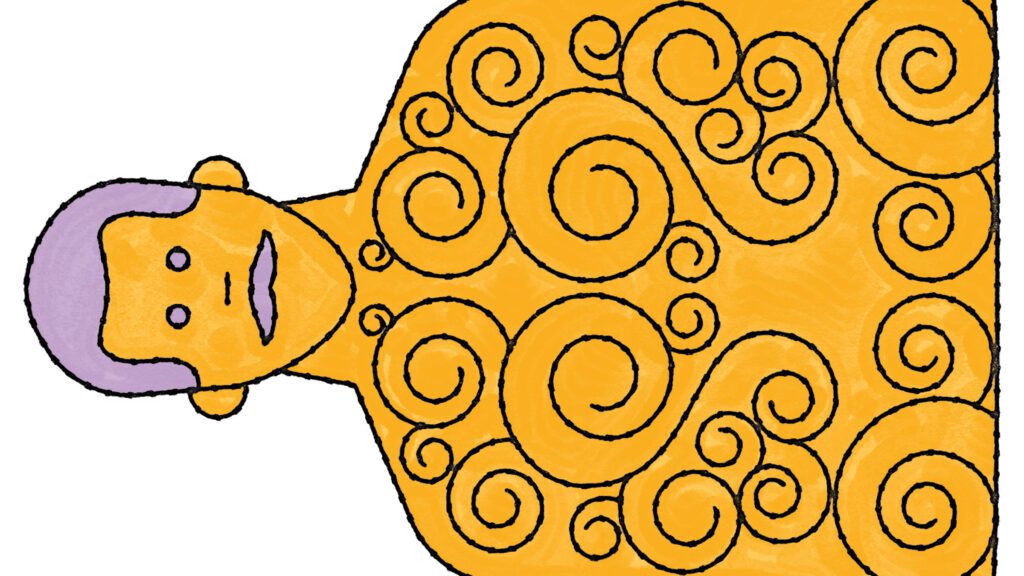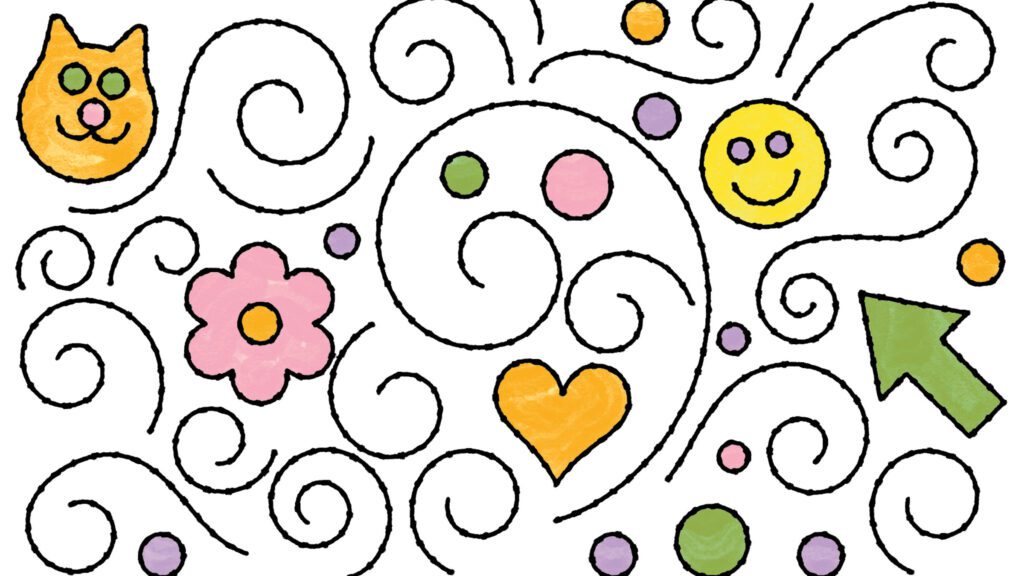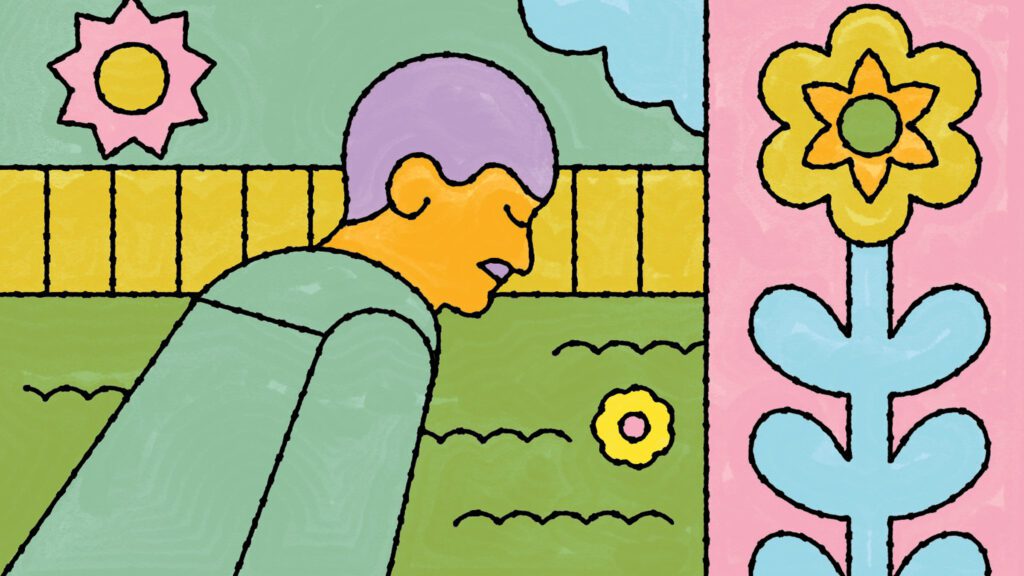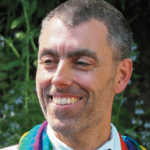How to Practice Mindful Breathing for Anxiety
It’s a simple, calming meditation that you can do anytime, anywhere. Instructions by Melvin Escobar with Gregory Mengel. The post How to Practice Mindful Breathing for Anxiety appeared first on Lion’s Roar.

When I was twelve years old, I experienced a near drowning at a public swimming pool. I’d been to the pool many times, but since I’d never had swimming lessons, I always stayed in the shallow end. One bright and sunny day, my best friend convinced me that he could teach me to swim. First, I’d just need to jump off the diving board into the deep end of the pool, and he’d instruct me from there. He swore he’d catch me somehow. Needless to say, he didn’t catch me, and I found myself suddenly over my head in the most terrifyingly literal way. Naturally, I panicked. Gasping for air, I inhaled gulps of water before the lifeguard jumped in to drag my water- and trauma-logged body out of the pool.
I avoided all bodies of water for the next twenty years. Until one day, sitting on the shores of a beautiful mountain lake, I resolved that when I got back to the city, I would learn to swim. I went home and enrolled in swimming classes through my local community college. Equipped with several years of mindfulness practice, I was finally going to face my fear.
I wanted to be able to be in the water without being flooded by anxiety or experiencing agonizing flashbacks from that fateful day. It was an excruciating three semesters. I’d get home from class, and my husband would ask, “How’d it go?” My pat response was, “I survived.”
Mindful breathing was my lifeline. There were days when I was so overwhelmed I had to get out of the pool before class was over. But just as often, my practice enabled me to stay connected to my body and the present moment. Over time my anxiety began to abate.
Now, I’m happy to report that, when it’s safe enough, it’s nearly impossible to keep me out of the water! Even though I still get overwhelmed at times, I bow to my body-mind and acknowledge that it’s simply trying to protect me from harm.
The dharma is all about learning how to navigate the unpredictable waters of life with awareness, wisdom, and compassion. In these anxious times, there are plenty of stressors affecting our breathing. Moment to moment, we may be unconsciously anticipating the next ping of our phone or the next horror in our feed. The looming chaos in our political and planetary atmospheres weighs on us constantly, along with the ever-present demands of work and family. Meanwhile, Covid has forced us all to reckon with the profoundly interdependent nature of breathing.
As the dharma reminds us, however, we have agency in relation to our breath. The practice of mindful breathing not only reveals that respiration is both automatic and voluntary, it empowers us to choose the quality of breath appropriate to each moment. In times of intensity, as when literally or metaphorically drowning, our breath becomes short and shallow; its purpose is to create the energy we need to get ourselves out of danger. But energy from a fight-or-flight reaction that isn’t discharged can manifest as toxic stress. Practicing mindful breathing can help us metabolize excess energy or preempt the reactivity that produces it. In fact, a growing body of research is revealing substantial benefits for the body and mind when we breathe diaphragmatically or engage in other mindful breathing practices.
When entering into any mindfulness practice, it’s important to let go of the idea that there’s one right way to be mindful. You can be sitting, standing, moving, or lying down. Your eyes can be opened or closed. You can be in an ashram or a cubicle (or a swimming pool). What matters most is the quality of your attention and intention.
While a variety of mindful breathing practices have been handed down over time, I will be offering an approach that’s based on the teachings in the Anapanasati Sutta. This sutta guides the practitioner to focus their attention on body, feeling, mind, and mental objects while following the breath. According to this scripture, “mindfulness of in-and-out breathing, when developed and pursued, is of great fruit, of great benefit.”
Let’s dive into the practice!

1. Mindfulness of Body
Begin by noticing that the body is already breathing. Take long, smooth breaths into your entire body, from the tips of your toes and fingers, all the way to the top of your head. Allow your breath to expand into your belly. Observe the sensation of your breath as it enters into and passes out of your nose or mouth.
2. Mindfulness of Feeling
Next, gently notice where the body may be holding excess tension. Can you find ease or even joy via your breath? Bring kind awareness to whatever sensations are present; label them as pleasant, unpleasant, or neutral. Focus your attention on the pleasant aspects of breathing. You might try on a slight smile, vocalizing as you exhale, or imagine a warm and protective light surrounding you as you breathe.

3. Mindfulness of Mind and Mental Objects
Now, contemplate the mind. The mind can be conceived of as a flow of nonstatic sensations: thoughts, feelings, and physical perceptions that float around in the field of awareness. As you take this moment to meditate, allow these sensations to arise and pass away along with the breath. Instead of overidentifying with them, cultivate a sense of nonjudgment and gratitude. Breathe with whatever is present, for it’s merely the flotsam and jetsam carried along by the currents of consciousness.

4. Continuing Your Practice in Daily Life
As you draw your practice to a close, relish any moments where you experienced clarity of mind. Bow to the stillness that was made possible amidst the ebbs and flows of sensation inherent in the aliveness of your body.
Consider these questions as guidance for bringing the practice into your daily life: How can a daily practice of mindful breathing buoy you in times of distress? How can you stay mindful of your breath when you feel at risk of going under? How can mindful breathing help you more skillfully navigate the choppy waters of your community and society as a whole?

Melvin Escobar is an El Salvadoran bilingual-bicultural Dharma teacher, licensed psychotherapist, and certified yoga instructor. He serves as a Core Teacher at East Bay Meditation Center, has a Master’s degree in Social Work, and is a registered yoga instructor.

Gregory Mengel is a senior teacher with the UNtraining, which offers classes for white-identified people to unlearn white racial conditioning.

 Koichiko
Koichiko 


























.jpg&h=630&w=1200&q=100&v=f776164e2b&c=1)





